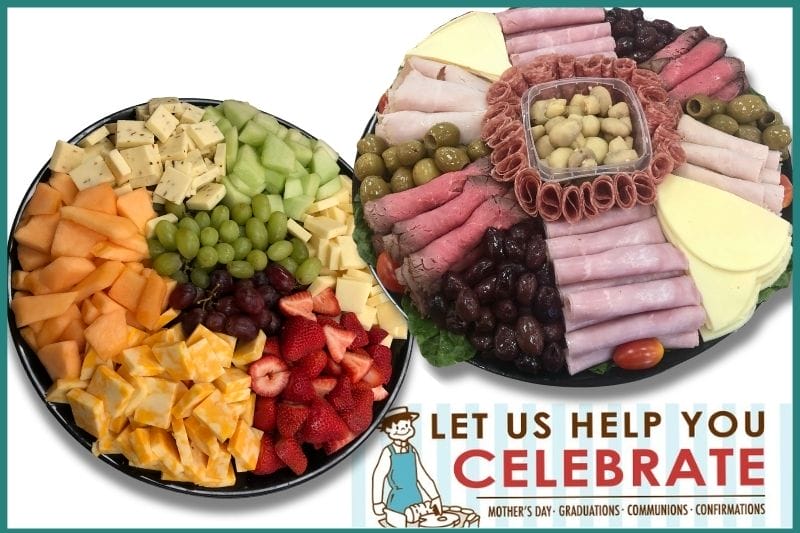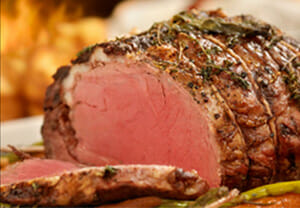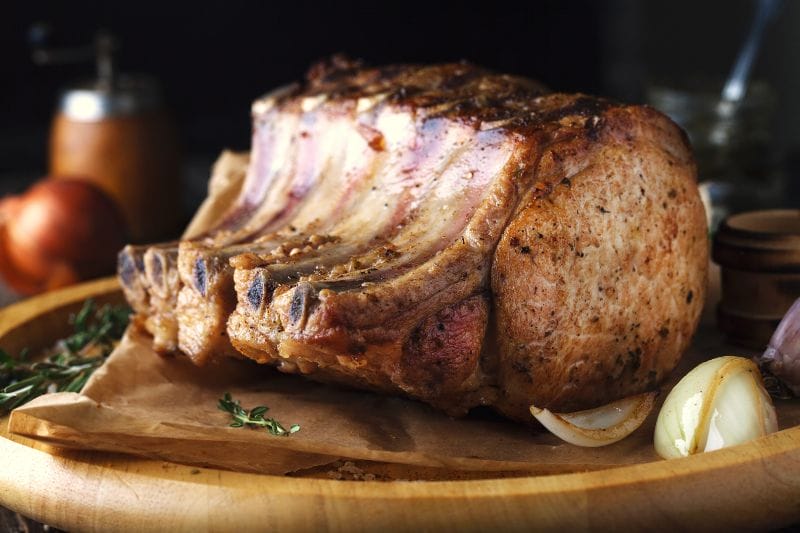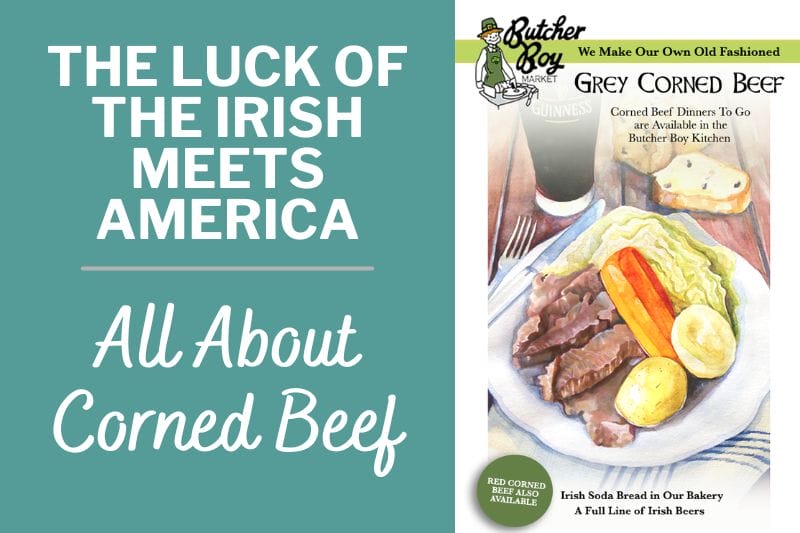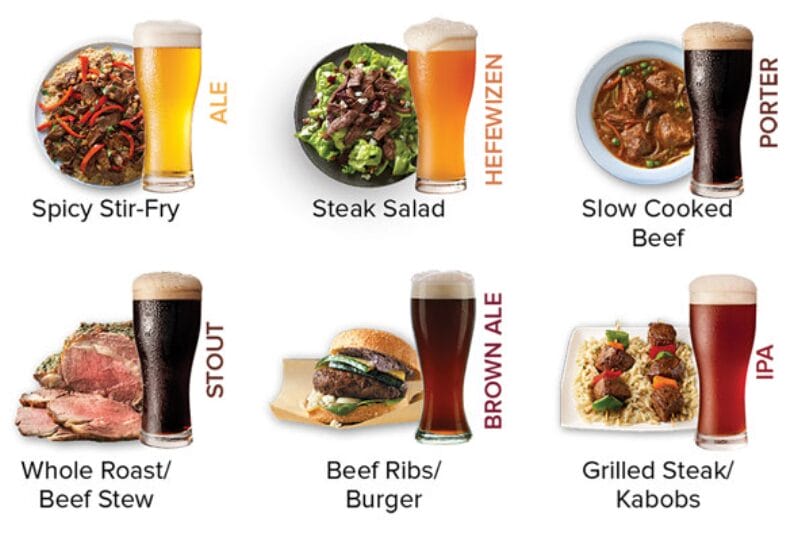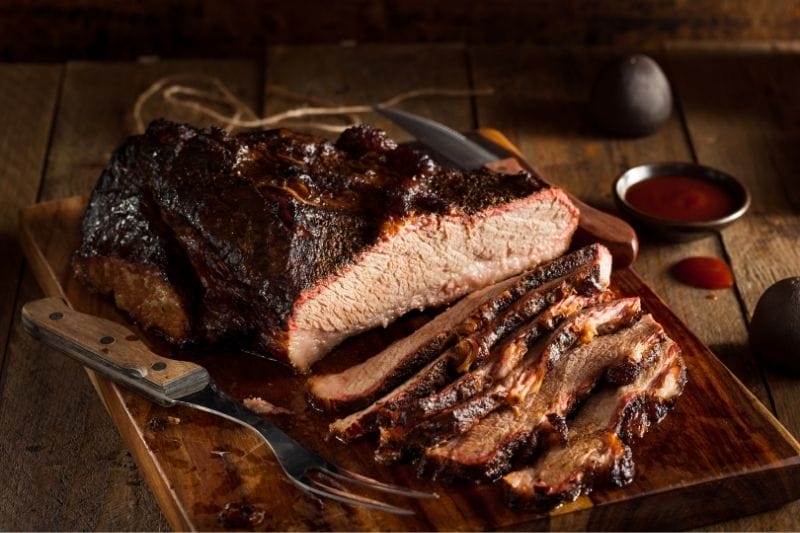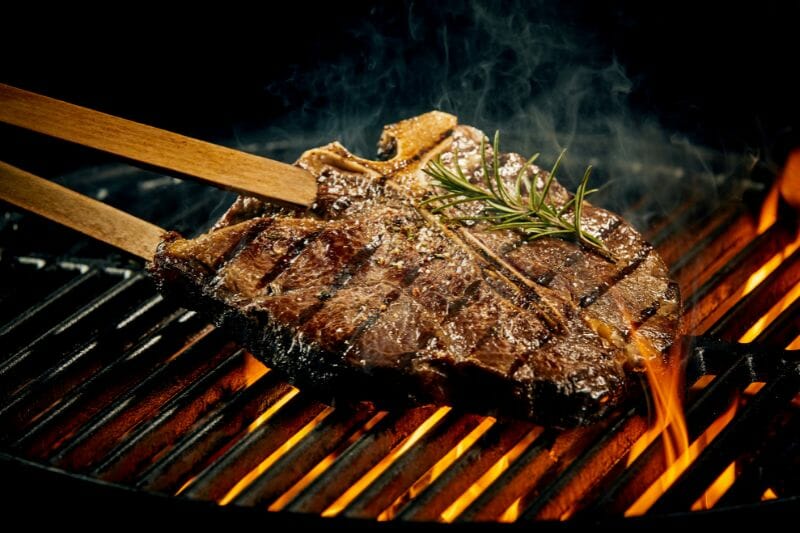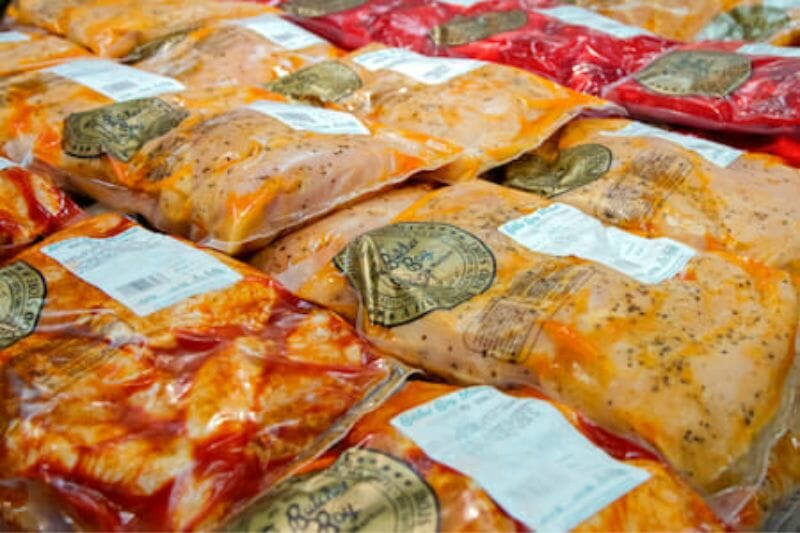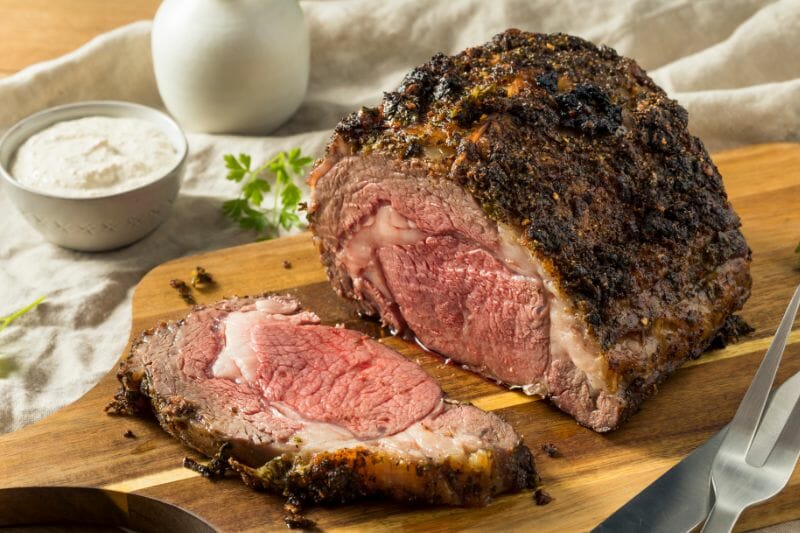It’s Tuesday. You’ve got 30 people coming to your home on Saturday for a big graduation celebration after the ceremony. A month ago it didn’t seem like a big deal. Now, it’s a full-blown emergency, and you’re overwhelmed. Who do you turn to? Continue reading “Easy Entertaining with Butcher Boy”
Food Tag: Beef
Beef Roasting Guide
When viewing on mobile, scroll right for internal temperatures and scroll down for handling tips.
Tips
- Bring roast to room temperature one hour prior to cooking.
- Preheat oven a half hour before putting the roast into the oven.
- Use the time chart as a general guide. Check the roast before the minimum time recommendation because each oven is different, and times will vary.
- We recommend you use either a meat thermometer, which stays in the roast as it cooks, or an instant thermometer, which does not stay in the oven.
- The thermometer must be placed in the center of the roast, and must not touch a bone.
- Take the roast out when the thermometer reaches 5° less than the desired temperature, because the roast will continue to cook after it is removed from the oven.
- Once you’ve removed the roast from the oven, let it stand 20-30 minutes before carving and serving.
- Roast all meat uncovered, on a rack, without water.

Holiday Roasting Guides
Holiday Roasting Guides
We have gathered our roasting guides in one place. Find your favorite holiday meat below and click the roasting guide for instructions on how to make the star of the show into a delicious holiday meal.
Crown Roast of Pork Roasting Guide
Happy Holidays to you and yours from Butcher Boy Market!
Highlighting our Fall Favorites
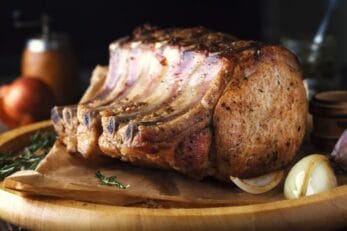 Fall days were meant for comfort food, and what’s more comforting than a perfectly prepared beef, pork, or chicken dish? We’ve got you covered. These cuts lend themselves to a variety of cooking methods including smoking, roasting, and crockpot preparations for those busy days. Don’t miss our latest Fall Favorites Shopping Guide for more information on our customer favorites. And check out our Cooking and Grilling Guides for valuable preparation tips to ensure a perfect result every time.
Fall days were meant for comfort food, and what’s more comforting than a perfectly prepared beef, pork, or chicken dish? We’ve got you covered. These cuts lend themselves to a variety of cooking methods including smoking, roasting, and crockpot preparations for those busy days. Don’t miss our latest Fall Favorites Shopping Guide for more information on our customer favorites. And check out our Cooking and Grilling Guides for valuable preparation tips to ensure a perfect result every time.
Here’s what our customers tell us are their favorites for fall:
Beef Brisket – Whether you choose a lean flat cut (best for quicker preparation) or a rich full packer, beef brisket is always a delicious crowd pleaser.
Check out this easy smoked brisket recipe from Beef. It’s What’s for Dinner.
Boneless Pork Butt – Perfect for pulled pork, this cut yields tender and delectable meat that can be used in a variety of recipes. Just remember “low and slow.”
Here’s a great smoker recipe from Serious Eats for perfect pulled pork.
Want to come home to delicious pulled pork after a busy day? Let your crockpot do the cooking. (Recipe from The Seasoned Mom)
Bone-In Center Cut Pork Roast – As impressive as a prime rib and just as delectable, this cut is surprisingly easy to prepare. Check out this simple smoker recipe.
Want to savor the smell of roast pork coming from your kitchen? Here’s a top-rated oven recipe from Food and Wine.
Beef Short Ribs – Marinating these succulent cuts of meat in a Korean-inspired perfect mix of sweet, sour, and salty makes for a delicious bite in this grilling recipe from Beef. It’s What’s for Dinner.
Want a great slow-cooker alternative? These slow-cooker short ribs from Taste of Home are sure to please.
Baby Back Pork Ribs – Classic and delicious, there’s nothing like spice-rubbed pork ribs fresh from the grill and served up with your favorite barbecue sauce. You can’t go wrong with this prize-winning recipe prepared on the grill.
Don’t forget our amazing selection of shanks, roasts, and oven-ready specialties for easy, quick, and delicious meals.
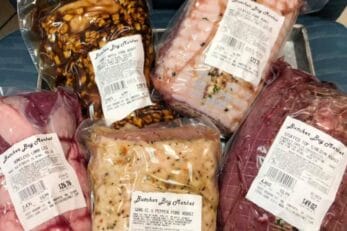 Seasoned & Stuffed Roasts: Choose from delicious options such as Honey Apple Pork, Garlic Pepper Pork, Stuffed Top Sirloin, and Stuffed Pork Roast.
Seasoned & Stuffed Roasts: Choose from delicious options such as Honey Apple Pork, Garlic Pepper Pork, Stuffed Top Sirloin, and Stuffed Pork Roast.
Shanks: Veal Osso Buco is the ultimate comfort food with a hint of extravagance – ask for a veal hind shank at our butcher counter and try this recipe from Giada De Laurentis for a delicious dinner. For another incredible restaurant-inspired meal try braised lamb shanks, slow-cooked and served alongside a creamy risotto. Or, pick up some beef shin bones with meat and try this take on classic beef and barley soup.
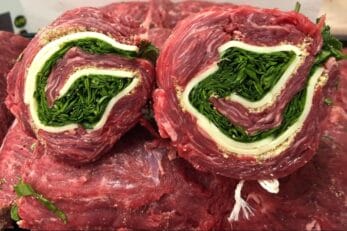 House Specialties: Our stuffed chicken breasts feature a variety of savory stuffings. Beef and pork options include Braciole, Meatloaf, Stuffed Flank Steak, Beef Pinwheels, Stuffed Pork Chops and Pork Pinwheels.
House Specialties: Our stuffed chicken breasts feature a variety of savory stuffings. Beef and pork options include Braciole, Meatloaf, Stuffed Flank Steak, Beef Pinwheels, Stuffed Pork Chops and Pork Pinwheels.
Perfect Sides: Our kitchen prepares delicious vegetables, classic sides, and much more. Don’t miss out on our fresh homemade applesauce, a perfect addition to your fall table.

The Luck of the Irish Meets America — All About Corned Beef
Most of us think of two things when we think of St. Patrick’s Day – the wearing of the green and corned beef. What you may not know is that St. Patrick’s Day had been observed in Ireland for about eight centuries before being first celebrated in 1601 in North America in what is now St. Augustine, Florida. That celebration, incidentally, also marked the very first St. Patrick’s Day Parade. Today, St. Patrick’s Day is widely celebrated across the nation. Boston, with its large Irish-American population, is famous for its epic St. Patrick’s Day festivities, and many wouldn’t consider it complete without serving a traditional corned beef and cabbage boiled dinner with delicious root vegetables including parsnips, carrots, potatoes, and turnips.
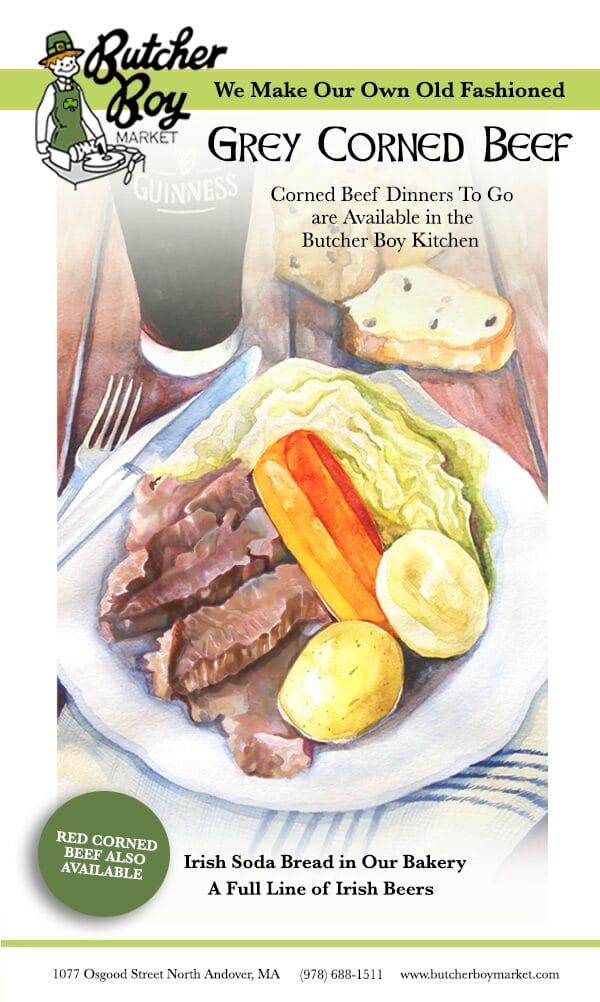 But did you know corned beef and cabbage, although close, is not really a traditional Irish dish? It’s all a matter of economics. The traditional dish in Ireland has historically been cabbage and bacon, but Irish immigrants to the U.S. found beef to be a less expensive option at the time, so corned beef and cabbage was created here – traditional but with an American twist.
But did you know corned beef and cabbage, although close, is not really a traditional Irish dish? It’s all a matter of economics. The traditional dish in Ireland has historically been cabbage and bacon, but Irish immigrants to the U.S. found beef to be a less expensive option at the time, so corned beef and cabbage was created here – traditional but with an American twist.
So, exactly what is corned beef? Simply put, it’s beef brisket that has been cured in a salt solution, a process that helps preserve and tenderize the meat while lending extra flavor through the addition of spices, garlic, and herbs (think pickling spices). More commonly, corned beef is pink because of the use of pink curing salt to preserve it. Corned beef is also a popular deli meat, most known for its deliciousness in the iconic Reuben sandwich.
What you may not know is that there is an equally delicious version from the Boston area using just salt, grey corned beef, named for its characteristic darker color. We are proud to be one of the very few butcher shops that offer this distinctive regional take on traditional corned beef.
And while we’re on the subject of St. Patrick’s Day cuisine, let’s not forget other iconic Irish treats to round out your St. Pat’s Day celebration such as delicious Irish soda bread with raisins or currants. For a delicious version, check out Grandma O’Connor’s Irish Soda Bread, a treasured soda bread recipe, shared with some fascinating family history by one of our amazing customers.
Why limit the deliciousness of corned beef to one day a year or do the same ol’ with your leftovers? There are many delectable recipes out there that take corned beef to a whole new level. For starters, try out Corned Beef Reuben Soup or a Rustic Corned Beef and Potato Bake. And there’s nothing like homemade Corned Beef Hash served with a delicious runny egg on top.
Wishing you all the luck o’ the Irish this St. Patrick’s Day!
Beef & Brews: Pairing Tastes for the Ultimate Meal
Whatever kind of beef is on your lunch or dinner menu – a simple burger, the most tender steak, the juiciest prime rib, the richest stew – one of the best ways to bring out the best flavor is to pair it with an ice-cold beer. The various cuts and textures of beef can be matched with different types of beer so that neither overpowers the other. One big culinary advantage of pairing beer with any meal is that the crisp carbonation serves as a refreshing palate cleanser, allowing you to enjoy every bite. If done correctly, the pairing you choose will allow food and drink to complement each other.
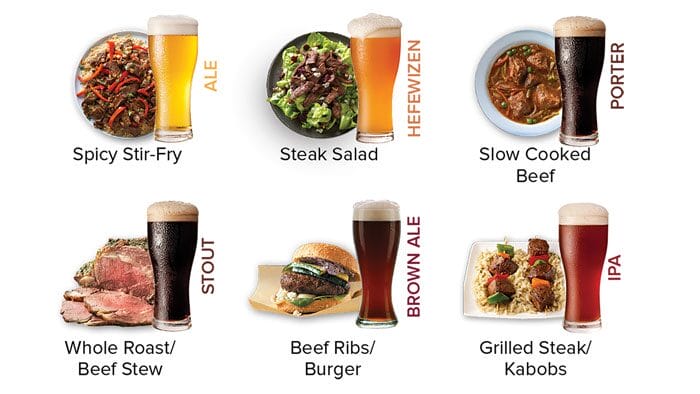
Exploring Beer Varieties
What’s your preference when it comes to a good brew? Read on for suggestions on how to choose the best cut of beef to go with your beverage of choice or the right beer that will taste great with the meal you’re preparing.
Pale ales, such as Sierra Nevada Pale Ale and Night Shift Whirlpool, are light-colored beers with just the right bold notes that pair best with a meaty sirloin. The aroma and flavor of those beers are also great for a spicy stir fry or barbeque brisket.
Beer can pair as well as wine with a fancy filet mignon. In fact, filet has subtle flavors compared to other cuts, so light lagers, such as Night Shift Nite Lite, enhance the steak’s flavor instead of overpowering it. Similarly, pilsners, which are a specific type of light lager, are ideal for a marbled New York strip steak.
Golden-colored Hefeweizen beers like Weinstephaner Hefeweizen or Paulaner Hefeweizen are an easy choice to go with lighter meals, such as a salad with steak tips.
Those popular craft IPAs, Indian pale ales, taste more bitter with floral undertones, and they are a perfect match with a good ribeye or t-bone steak. Ribeye demands a beer that can stand up to its richness, and an IPA is just the thing. A smoked brisket is a nice option as well. Try Fiddlehead IPA or Lagunitas IPA.
Brown ales are darker, as the name suggests, with more malt than hops, which make this beer variety a delicious companion for a burger or rack of ribs. Pour yourself a Smuttynose Old Brown Dog or Wormtown Blizzard of ‘78 to balance out the richness and boost the flavor of those cuts of beef.
Falling in the category of the darkest beers with caramel, chocolate, and toffee flavors, are porters and stouts. Generally speaking, the distinction between the two is that a porter, such as the robust version made by Founders Brewing Company, has more hops, while a stout – including the world-famous Guinness – is maltier. You can’t go wrong with either to pair with a slow-cooked prime rib, roast beef, or a hearty stew.
Beer-based Marinades
Cooking with beer is another option for boosting your beef’s flavor. We know that infusing beef with marinades can transform the ordinary into the extraordinary. Using beer adds another layer of flavor profile that can enhance the meal. Marinating with beer adds a depth of flavor to your cooking but also breaks down tough fibers in the meat, making it more tender. Experts suggest marinating for a couple of hours.
A wide selection of the beers featured in this guide, as well as many others, are available at Butcher Boy for your convenience when you’re picking up the meat for your dinner. And if you’re looking for taste without alcohol content, we offer several brands of non-alcoholic varieties, including Blue Moon Wheat Ale N/A, Athletic Brewing Company Whits Peak Belgian Ale N/A, Athletic Extra Dark (similar to a Porter), Sam Adams Just The Haze, and Guinness Stout N/A. Any of these non-alcoholic beers can be used in place of their varietal counterparts for the same meal pairings.
Experiment with combinations of beer and beef to taste how different flavors work together. We’d love to see your results – please share in the comments on Facebook or tag @ButcherBoyMarket on Instagram. Cheers!
Brisket Basics for a Fall Feast
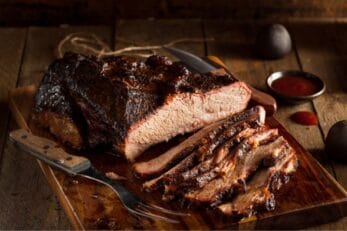 A good beef brisket is tender, flavorful, and one of the heartiest ways to satisfy a hungry crowd. The key to success with this cut of beef is to cook it low and slow. The most common methods for preparing brisket are suitable to adapt for just about any recipe featuring this delicious cut.
A good beef brisket is tender, flavorful, and one of the heartiest ways to satisfy a hungry crowd. The key to success with this cut of beef is to cook it low and slow. The most common methods for preparing brisket are suitable to adapt for just about any recipe featuring this delicious cut.
When selecting a brisket and cooking a brisket, you’ll want a better understanding of some terms you’ll see referenced in cooking instructions and know what to ask for at the meat counter.
Flat vs Packer
Packer brisket is a full brisket containing both the flat and point cut, which is fatter than flat. The flat cut is a long rectangle with the same thickness throughout, and is good for braising, pot roast, or corning. The flat cut is also known as the first cut, and because of its shape, is best for slicing. Packer brisket is best for smoking and for barbecue.
How Much Brisket is the Right Amount?
Brisket will shrink while cooking, which means your finished dinner will weigh less than the piece of beef you purchased. With those factors in mind, buying a cut of brisket that equals about one pound per person is reasonable and accounts for having leftovers. You might need to cook a couple of briskets whose total weight adds up to the number of friends and family coming for dinner.
If you’re unsure of how much you’ll need, or have any questions about the cut of brisket or how to prepare it, our team at the Butcher Boy meat counter is always happy to help.
Brisket Cooked at Least Three Ways
Now let’s get cooking! There are several ways to prepare brisket, and we’re going to highlight the most traditional that will give you the best results. The one you choose depends on preference and how you want to serve it.
Smoked brisket is what most of us think of when we’re talking about Texas-style barbeque. It’s not difficult to do, but it takes a couple of not-so-secret techniques, along with a lot of time and patience.
One of the steps considered critical in barbecue and smoking circles is to wrap the meat in butcher paper during the smoking process. The concept is that the paper, instead of aluminum foil, allows the smoke to continue penetrating the brisket and enhance the flavor while keeping the juices in. The paper you use should be uncoated and food grade. Place the brisket fat side up on the paper and wrap it like a present. Make sure it’s tights and leaves no openings. Then finish smoking your brisket.
Oven braising / Pot Roast provides a kind of set-it-and-forget-it method of preparing brisket and can even be made the day before. You might even think the rich flavor tastes better that way. Braising is also a fool-proof way to guarantee tenderness. The only tool you need is a heavy, oven-safe pot with a tight lid.
Do you have a favorite way to cook brisket? Are you ready to try it a new way? We invite you to share the techniques you’ve discovered for the best flavor with our community on Facebook or tag @ButcherBoyMarket in your Instagram posts. And be sure to connect with us on social media for tips, inspiration, and insight into what’s new in the store.
Check out the sought-after brisket recipe we share with customers in-store here – the flavor step is key to bringing out the flavors.
Don’t forget to shop at Butcher Boy to let us round out your menu with side dishes that include fresh vegetables and seasonings, plus dessert, beverages, and more!
Sizzle & Smoke: Mastering Outdoor Cooking
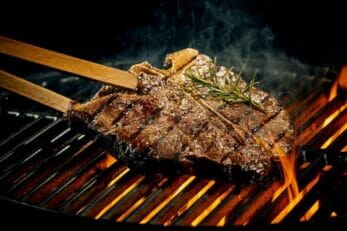 For a lot of people, there’s nothing like outdoor cooking. From the beckoning aroma of food sizzling on the grill to the casual vibe of gathering with friends and family, moving meal prep from the confines of the kitchen just seems to make everything taste better. That’s true, whether you’re using gas, charcoal, or wood smoke. Whether you already are a pro at the basics or you’re looking to perfect your methods, we can provide some reminders and help you take your skills to the next level.
For a lot of people, there’s nothing like outdoor cooking. From the beckoning aroma of food sizzling on the grill to the casual vibe of gathering with friends and family, moving meal prep from the confines of the kitchen just seems to make everything taste better. That’s true, whether you’re using gas, charcoal, or wood smoke. Whether you already are a pro at the basics or you’re looking to perfect your methods, we can provide some reminders and help you take your skills to the next level.
Step Up Your Grilling Techniques
The most common way to grill is through direct heat. That’s when you cook the food directly over the flame. It gives your meat those familiar grill marks, and is the right method for foods that cook quickly, because if you have to keep it on the grill too long to ensure it’s cooked through, it will dry out.
Indirect heat requires grilling adjacent to the heat course. Cooking on the hot grates and letting the heat circulate around the meat is less intense – more of a slow and steady approach. It works best on large cuts of meat, such as whole chickens, roasts, and briskets, that need more time to cook perfectly at lower temperatures.
An experienced grill master knows how to manage two heat zones. Keeping direct heat and indirect heat sides of your grill gives you flexibility to cook various foods at once. For instance, you can sear your veggies or burgers over a flame, then move them to the cooler side so that they stay hot but don’t burn while other items continue cooking.
Have you heard of the reverse sear? Home cooks are discovering this method, and word is slowly spreading that it’s a near perfect way to grill a steak with tender, flavorful results. The trick is the two-zone combination of direct and indirect heat. Start the steak on the indirect side, low and slow, to bring the meat up to temperature and cook evenly to your taste. This technique calls for patience because it will take longer than traditional grilling. The last step is to hit the steak with a high flame on the direct heat side, to give it that charred crust, without burning because you know the inside is already done.
Smoking 101
An alternative to a gas or charcoal grill is a smoker. The main differences between the two are the cooking time required and cooking temperature. But those loyal to smokers know it’s not as simple as that. Smokers use the smoke from burning wood to slowly cook and infuse the meat with flavor.
Choosing the right smoking wood depends on the meat you choose and the flavor profile you’re aiming to match. First, decide on chips versus chunks versus small logs. Wood chips are best for short cooking times, for things like fish and smaller cuts of meat, because they burn up quickly. Wood chunks and splits are good for hours of cooking time. Larger cuts of meat such as pork shoulder, brisket, and ribs fall into that category.
Fruit woods provide mild, sweet flavor. Choose apple or cherry wood for poultry, pork or fish.
Hard woods add more intense flavor. Hickory gives beef and pork some spice, while maple gives a sweeter smoky flavor best for pork and poultry. Oak is one of the most popular woods and its milder flavor goes with just about anything you want to cook. The most concentrated, bold flavors is mesquite, and works best on large cuts of meat.
Beyond Burgers: Upping Your Culinary Game
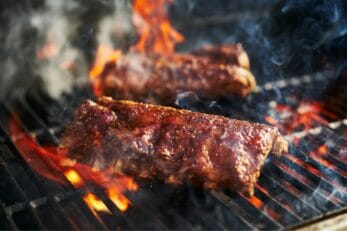 Hamburgers and hot dogs are standard summer cookout fare, but you could kick things up a notch with some variety in your grilling menu. Check out our Summer Order Guide for a look at all the marinated beef, chicken, pork, and sausages we offer to please a hungry crowd. When you want to throw steaks on the grill, but aren’t sure which cuts are best for cooking outdoors, we can help you decide!
Hamburgers and hot dogs are standard summer cookout fare, but you could kick things up a notch with some variety in your grilling menu. Check out our Summer Order Guide for a look at all the marinated beef, chicken, pork, and sausages we offer to please a hungry crowd. When you want to throw steaks on the grill, but aren’t sure which cuts are best for cooking outdoors, we can help you decide!
Don’t forget the power of herbs and spices in the cooking process. Marinades, rubs, and glazes are another way to give your outdoor meal a punch. Marinades are a combination of spices, oil, and some kind of citrus or vinegar. Using them helps tenderize your meat. Butcher Boy has a wide variety of flavors to choose from, conveniently made fresh so you don’t need to mix the ingredients: steakhouse, teriyaki, sweet bourbon, lemon pepper, garlic ginger and cajun are just a few of the options you’ll find here. Like the name implies, dry rubs are made with only dry ingredients. The flavors infuse the meat when it’s rubbed onto the surface.
Do you feel ready to take on the challenge of the grill? Remember that Butcher Boy is your one-stop shop for pre-made side dishes, desserts, and beverages. We’ll help you find the perfect wine, local brew, and non-alcoholic options to go with your menu.

Flavor Your Summer with Marinades
A good marinade can give beef, poultry, fish, and vegetables a kick of flavor. If you’re looking to maximize the benefits of marinating, check out these tips before you fire up the grill.
Marinating helps tenderize the meat and infuse flavor. Some of the best cuts of beef to marinate are flank steak, London broil, kabobs, and sirloin tips. Most recipes for marinating meat and poultry recommend a minimum of six hours or up to 24 hours. Always marinate your meats in the refrigerator. Leaving it at room temperature for long can allow dangerous bacteria to grow and lead to foodborne illness. Recipes will also advise you to discard the used marinade once it has soaked in, but you can brush on a new, bottled sauce or marinade while you’re grilling for added flavor.
Every marinade should include an oil, but make sure it’s one with a high smoke point, such as canola or safflower oils in your marinade if you’re grilling. Oils help the flavors absorb into the meat and high smoke point oils are flame — and grill — friendly. High smoke point oils include peanut, canola, avocado, or sunflower.
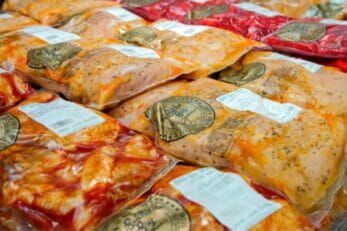
Start with pre-marinated meats and leave all the prep work to us. You can mix your own marinade, or buy the bottled stuff, but Butcher Boy has more than 15 types made in-house for a delicious, fresh homemade taste.
Our most popular flavor is the steakhouse for beef tips. Coming in second is lemon pepper chicken. Italian-style Francesco also is a favorite. Other popular varieties in our butcher case are sweet bourbon, burgundy, teriyaki, and cajun, garlic ginger. And don’t forget buffalo wings! We also offer barbeque baby back ribs. If you’re not sure how long to cook them, follow this guide for grilling time and method.
Add a tossed salad, maybe some sauteed or grilled veggies, and rice or baked potato, and you have an easy meal for summer. Stop by for all of your lunch or dinner menu needs. What are your favorite summer flavors for the grill?

How To Cook A Roast In The Oven: Temps, Times & Tips
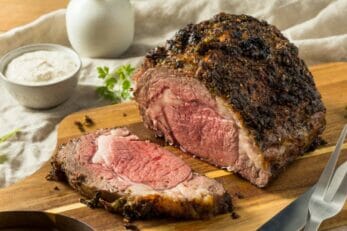 If you’ve ever cooked a roast, you might have followed our Beef Roasting Guide for instructions on what temperature to set the oven, how long to cook it, and how to know when your roast is done to your liking. The basic steps for successful oven roasting apply to any cut of meat.
If you’ve ever cooked a roast, you might have followed our Beef Roasting Guide for instructions on what temperature to set the oven, how long to cook it, and how to know when your roast is done to your liking. The basic steps for successful oven roasting apply to any cut of meat.
- Take your roast out of the fridge and take the chill off by letting it come up to room temperature. This can take about an hour.
- While you’re waiting, preheat your oven to the recommended temperature. You’ll notice our chart selects low to moderate heat, in the range of 325 or 350 degrees, for larger roasts and higher heat, above 400 degrees, for smaller, tender roasts to produce the best results. That’s because large roasts need to cook slowly and evenly, or else the outside of the meat would cook too fast before the inside is done.
- Place the roast on a rack in a roasting pan. A heavy pan is best, for even distribution of heat. The rack will prevent the meat from sitting in the drippings. If you don’t have a roasting rack, a wire cooling rack in the bottom of the pan will help raise the meat above the liquid. Do not cover your roast or put any water in the pan.
- A meat thermometer is another important tool. If you have an ovenproof one, insert it into the thickest part of the beef, usually the center. An instant read thermometer works, too, but don’t leave it in while the meat is cooking. If you don’t have a meat thermometer, you can pick one up at Butcher Boy while shopping for your roast.
- Take your roast out of the oven and give it a rest when the thermometer reads about 5 or more degrees less than your target temperature for doneness. Transfer the meat to a cutting board, cover it loosely with aluminum foil, let it sit about 15 minutes. It all depends on the size of the roast. Your roast will continue cooking and reach that perfect temperature. Resting also allows juices to redistribute inside the meat.
Are you looking for some inspiration for your next roast? Visit Butcher Boy and let our experts help you decide which cuts of beef are ideal. Any of these recipes can get you started after you’ve shopped our aisles for all your ingredients:
- Turn a boneless chuck roast into the perfect pot roast.
- This smoked herb rib roast will surely impress for special occasions, but is simple enough for a cozy weekend meal any time.
If you have any questions about how to cook a roast, whether you’re unsure about the oven temperature for a certain type or size of roast, or how much cooking time it takes to get just the right doneness, Butcher Boy can help. And don’t forget to let us know how it turned out the next time you stop in!

